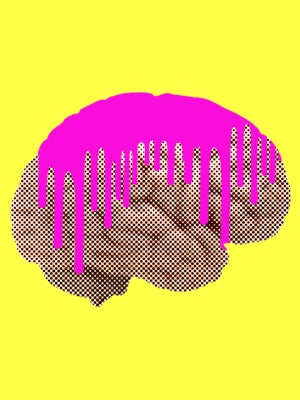 We admit that we’re not exactly angels when it comes to our diets: a cronut here, a bag of snack chips there, pints of ice cream that suddenly disappear accompanied by a Lifetime movie (when we’re feeling particularly sensitive). We also change our mind a million times a day when it comes to what we want to eat. What we hadn’t really considered is that what we’re eating is changing our minds… and bodies — and not necessarily for the better.
We admit that we’re not exactly angels when it comes to our diets: a cronut here, a bag of snack chips there, pints of ice cream that suddenly disappear accompanied by a Lifetime movie (when we’re feeling particularly sensitive). We also change our mind a million times a day when it comes to what we want to eat. What we hadn’t really considered is that what we’re eating is changing our minds… and bodies — and not necessarily for the better.
In fact, we’ve been hearing reports that the artificial dyes in foods are affecting our brain and body function in ways we’d never dreamed, and they’re pervasive in the foods we eat. “According to the Center for Science in the Public Interest, 15 million pounds of petroleum-based food dyes are used in the U.S. food supply each year,” explains Dr. Frank Lipman, M.D., an internationally recognized expert in the fields of Integrative and Functional Medicine, author, and founder of Eleven Eleven Wellness Center and the Be Well product line. “The most common are Blue 1, Blue 2, Green 3, Red 3, Red 40, Yellow 5, and Yellow 6.”
So, exactly where are these dyes found and how pervasive are they in our diet? Very pervasive, evidently. “Chances are, if your food is processed (i.e., you can’t picture it in nature) and it comes in a colorful box, it probably contains artificial dyes,” says Dr. Lipman. “The most common [culprits] are packaged snack foods, candy, and practically any food marketed towards kids (think blue yogurt, rainbow colored cereals, colorful beverages, breakfast pastries, etc). These dyes are not only included in the obvious neon-colored foods, though; they can even be found in some salad dressings, pickles, coffee creamers, oatmeal, sauces, and frozen dinners, just to name a few.” How can you tell if your food includes artificial dyes? “Simple: Check the full ingredients list of anything you put into your mouth. If it lists an actual color (like red, yellow, green, or blue) or the words ‘color’ or ‘coloring,’ avoid it.”
The dyes may make the food pretty, but the result on the body? Less than stellar. “Studies have linked artificial dyes to behavioral problems such as ADD/ADHD and hyperactivity, as well as allergic reactions, brain cancer, tumor growth, cell deterioration, nerve and organ damage, birth defects, and uncontrolled cell mutation,” says Dr. Lipman. “CBS News reported that certain children diagnosed with ADHD may not need medication if artificial dyes were removed from their diets!”
Okay, so that’s essentially cured us of our addiction to shiny bags of snack chips. Are there any ways to really avoid these dyes in our diets? “Yes, eat whole foods!” Dr. Lipman states emphatically. “Fresh produce that hasn’t been chemically altered and processed won’t contain artificial dyes. Avoid anything containing ingredients that you can’t recognize, and fill your diet with unprocessed foods that are colorful by nature. Shopping at farmer’s markets and food co-ops is a good way to find food free of artificial dyes. Some grocery stores, such as Whole Foods, don’t carry anything with artificial dyes, and Trader Joe’s private label products don’t either. Also, anything that’s certified organic can’t contain artificial dyes.”
We started thinking back to the years of, um, colorful foods we’ve consumed and we’re now sweating rainbows. Is there any way to reverse the damage that’s been done? Absolutely. ”Eliminating the foods with artificial dyes from your life is the biggest change you can make,” says Dr. Lipman. “A cleanse or elimination diet where you get rid of anything processed is a great place to start. Eating healthy, whole food can help heal your immune system as a whole, which will help you heal on a cellular level.”
While we’re not sure we can immediately cleanse our entire diets of everything that contains artificial dyes, we’ve definitely been given food for thought. A whole diet sounds amazing to us, especially if it will help us live longer without disease or affect to our thought processes. We have a hard enough time concentrating as it is.
Illustrated by Isabelle Rancier
Click HERE to read more from Refinery29.

Be the first to comment